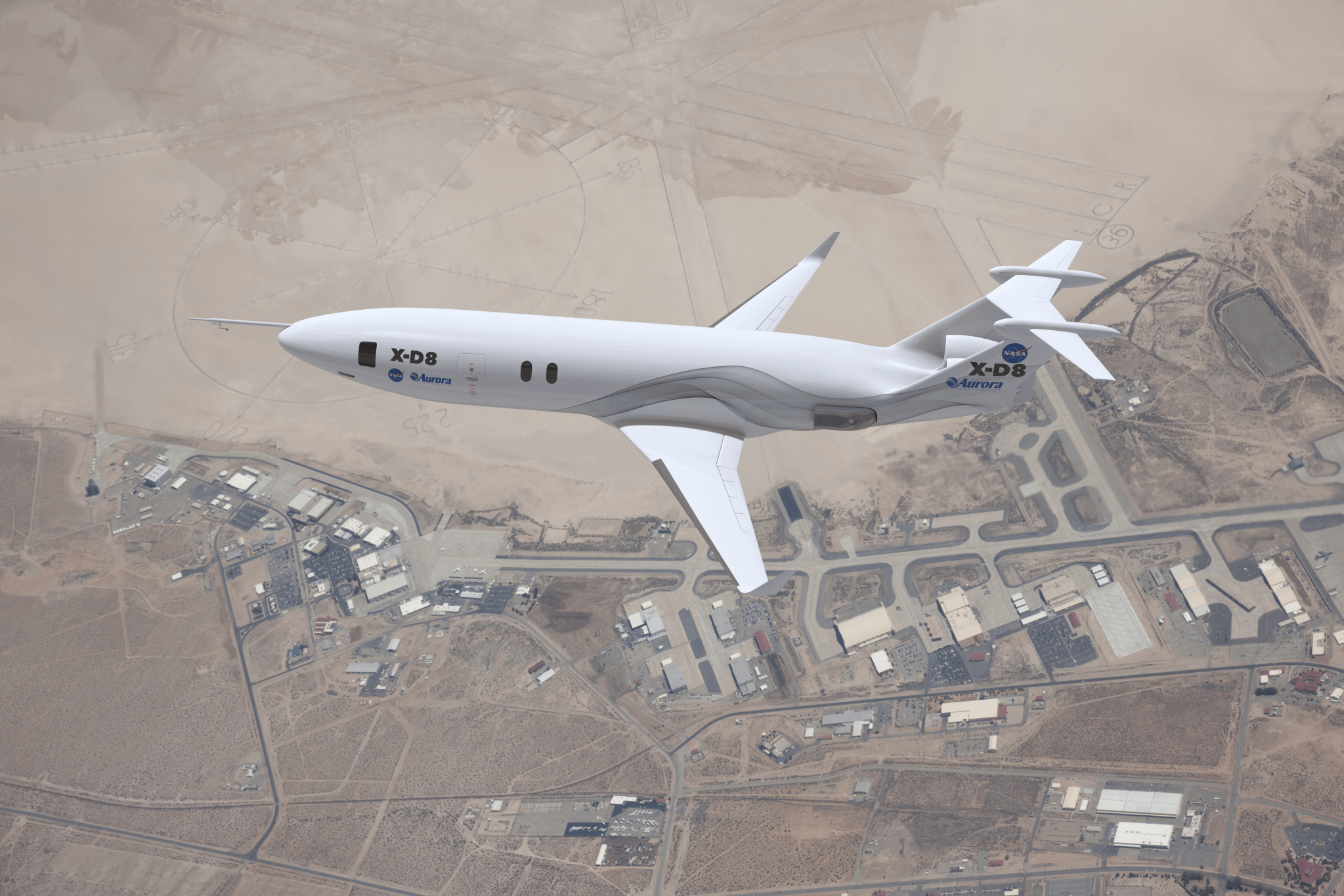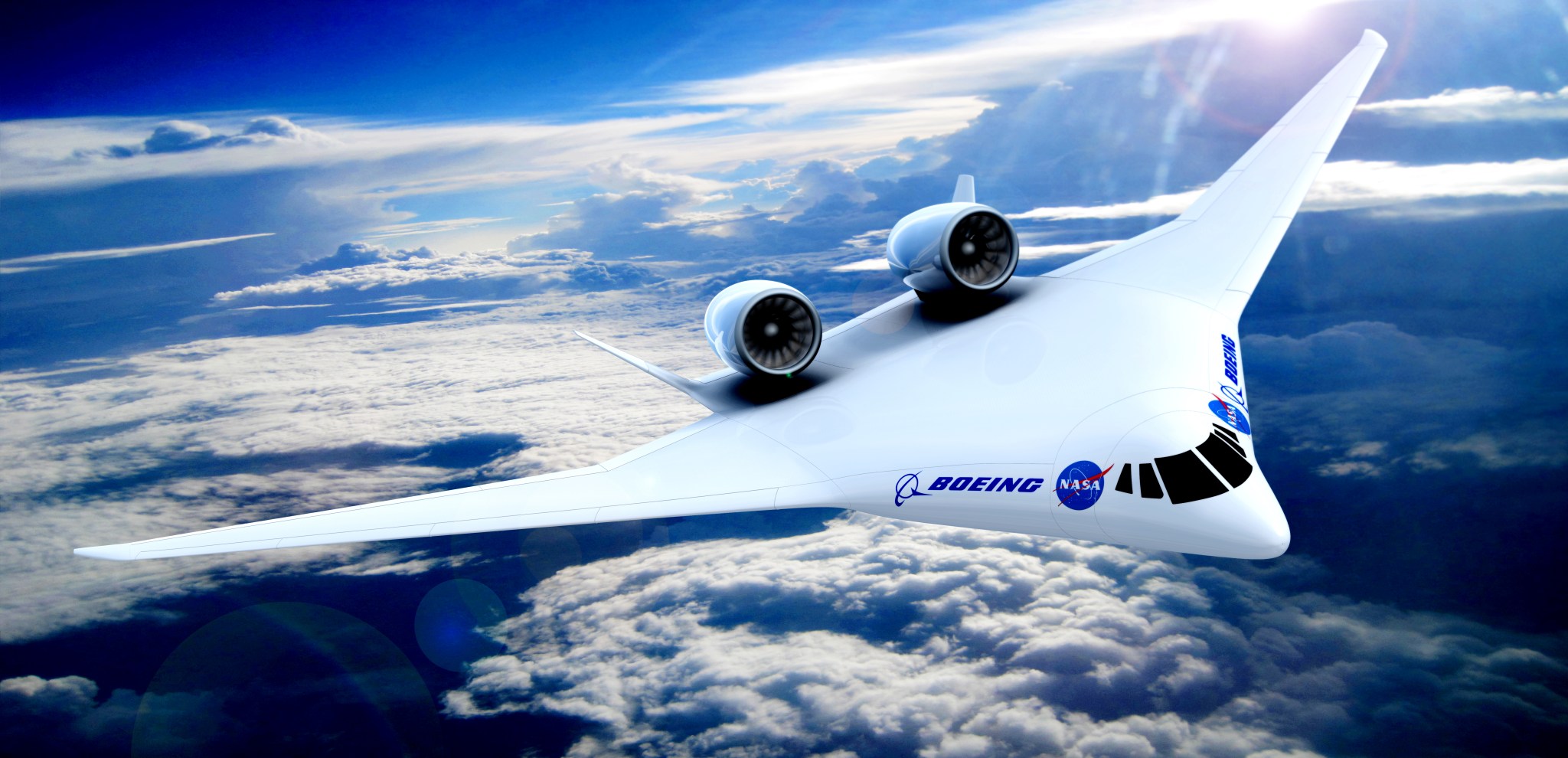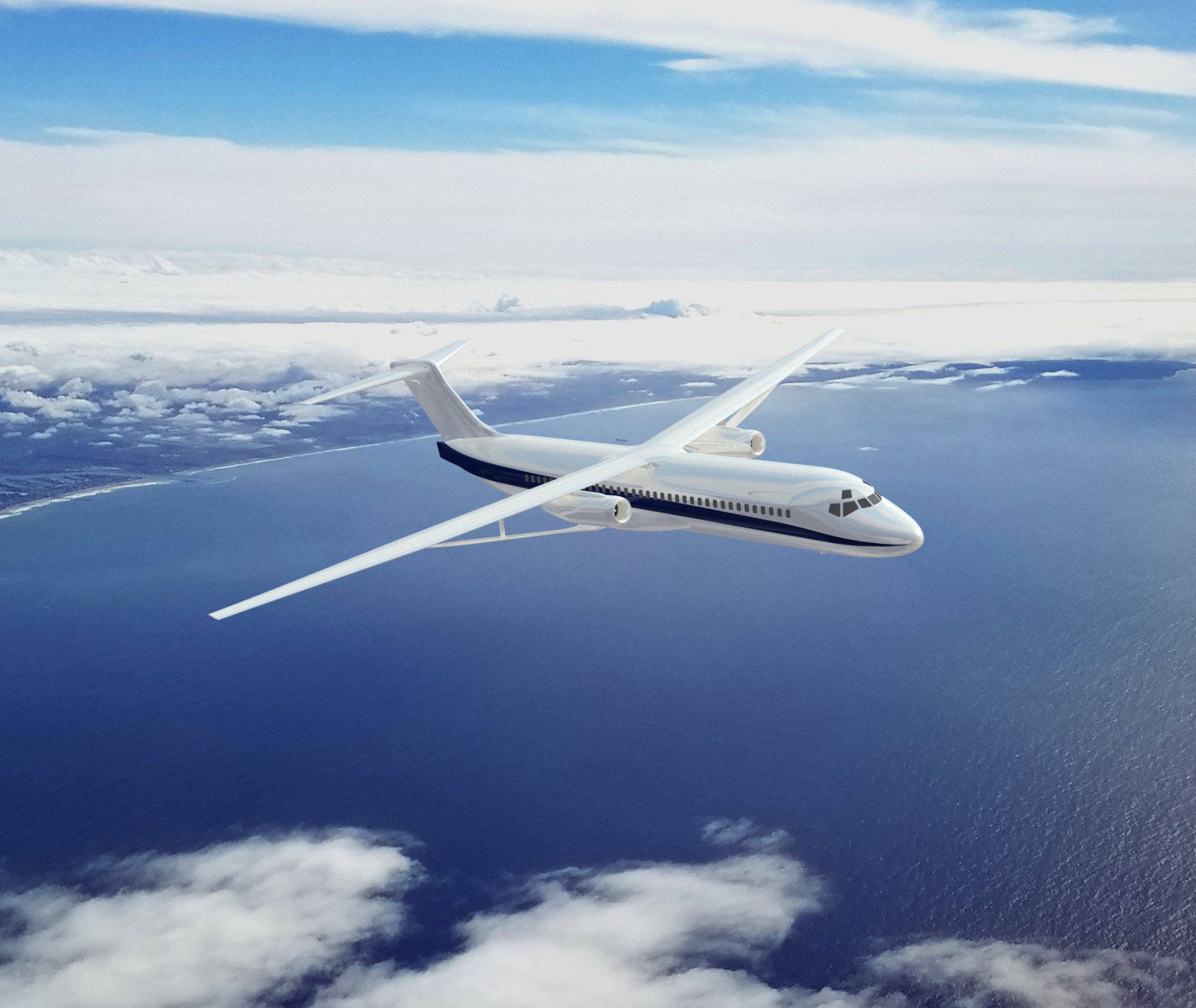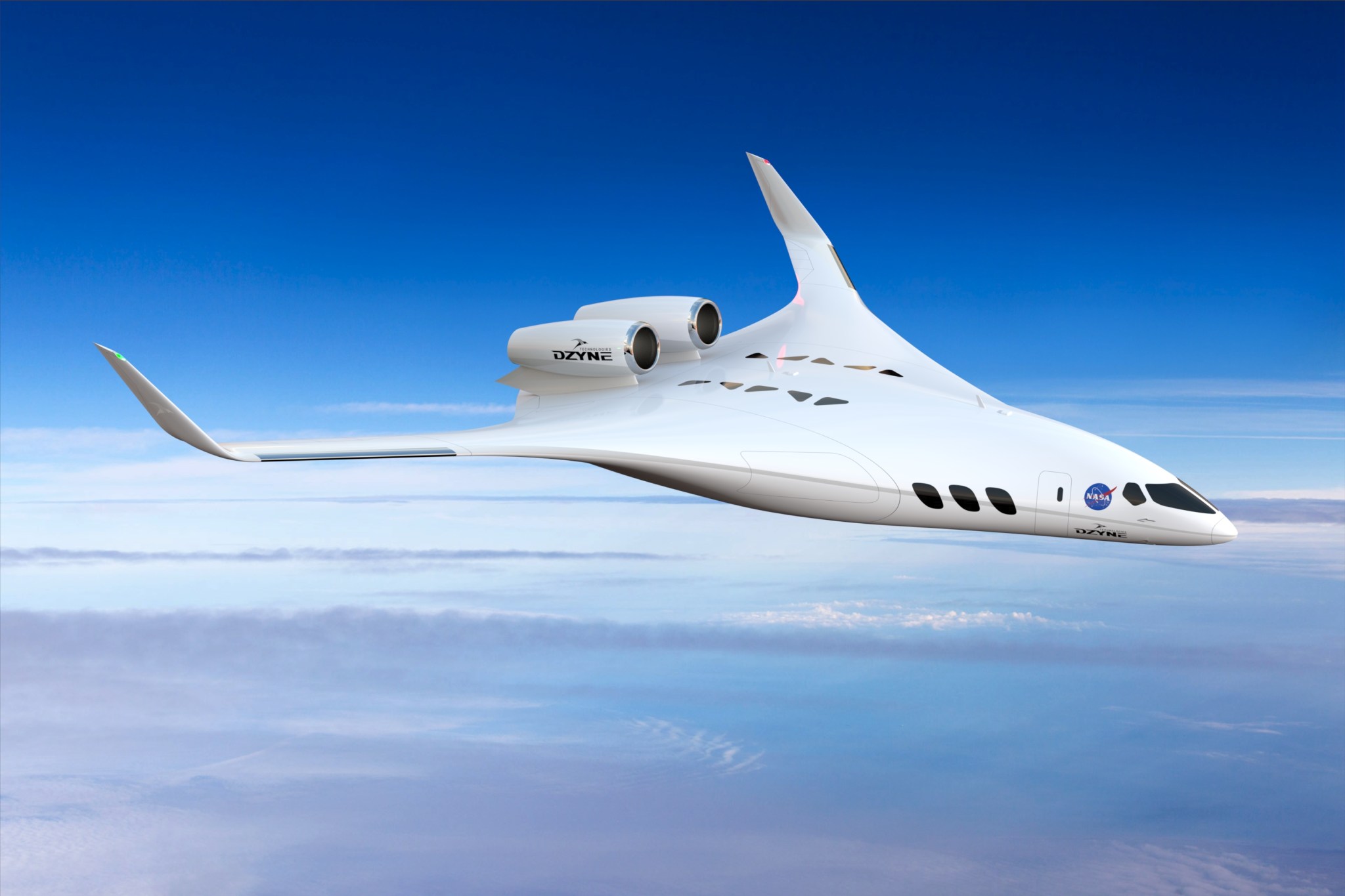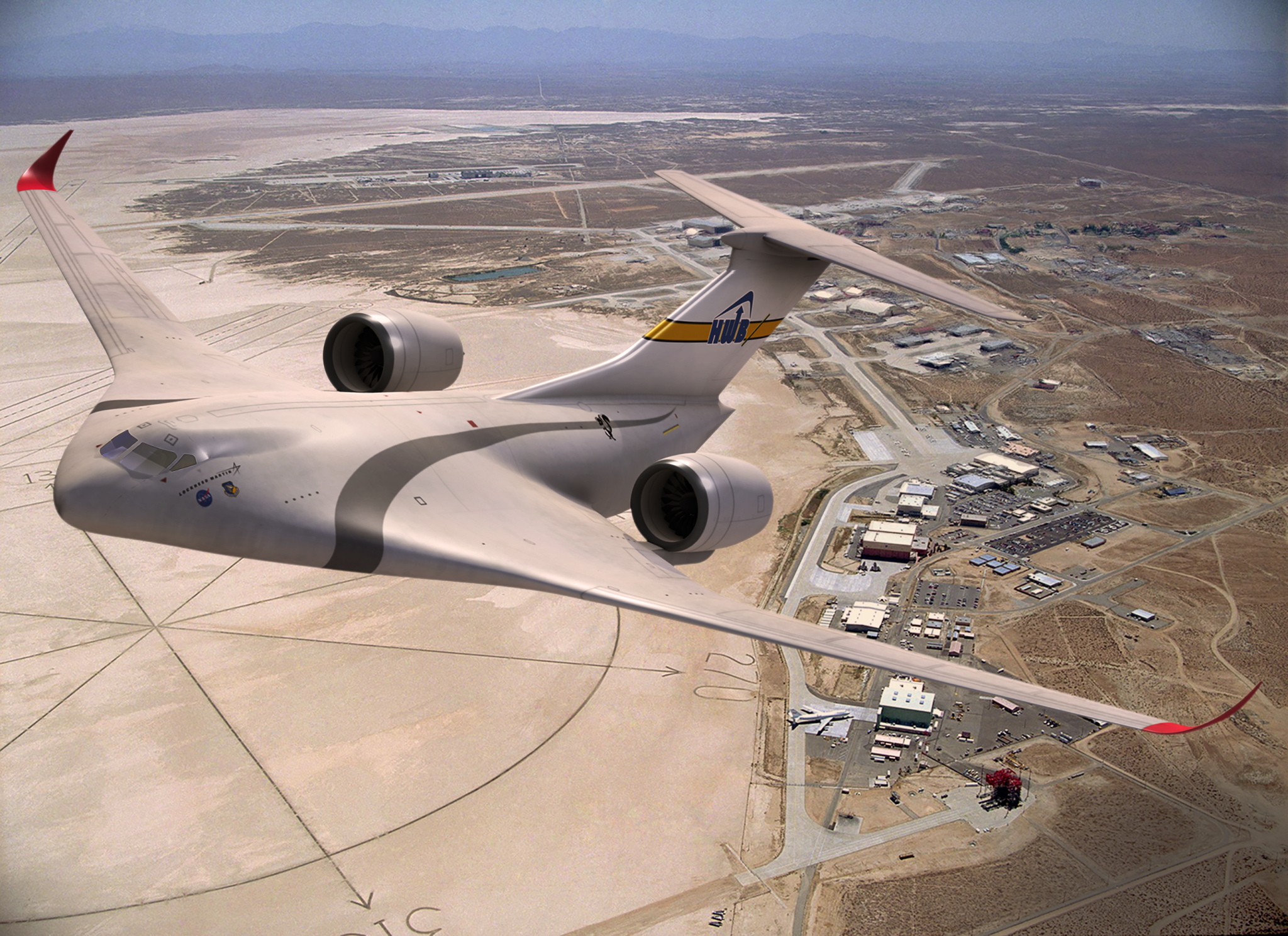It won’t be long before NASA’s aeronautical innovators will have a tough decision to make.
While moving ahead with plans to field a new “quiet” supersonic X-plane during the next few years, agency researchers also are developing a plan that will allow another X-plane with a completely different focus to be built.
For this next X-plane, attention is on demonstrating technologies that will enable industry to accelerate the deployment of new commercial airliners that are quieter, burn less fuel and release fewer emissions than the most efficient aircraft flying today.
The big question is what will that subsonic X-plane look like?
As a next step in the decision-making process, NASA recently turned to the aerospace industry for ideas. Four companies were awarded contracts to come up with five X-plane configurations on paper that met very specific operational criteria.
“We were very happy with the results. A lot of information was provided to NASA to help us make up our mind about how to proceed,” said Fay Collier, NASA’s associate director for flight strategy.
The six-month studies were required to define “vision systems,” which are future, advanced aircraft concepts suitable for operating in the nation’s air transportation system.
The concepts had to include enabling technologies to address goals by 2035 such as 60-80 percent reduction in fuel consumption, greater than 80 percent reduction in emissions during all flight phases, and more than 50 percent reduction in perceived noise compared to the quietest aircraft flying as of 2005.
Many of the concepts reflected a further maturation of research that industry and NASA worked together on during the past decade, especially through the now-completed Environmentally Responsible Aviation project.
The six-month studies also addressed the X-plane hardware itself; NASA’s requirements were for a piloted vehicle that could safely fly two to three hours at a time at transonic speeds, and have an operational life in the sky of 500 to 1,000 hours.
For planning purposes, each contractor was to assume the flight test program would be based at the Armstrong Fight Research Center in California, although other test sites could be proposed, and that the test program would be completed within 12 months of the first flight.
Above all, the ideas had to be realistic so that it would be possible for a company to build a business case for their investing in manufacturing operational aircraft based on the technology and systems demonstrated by the X-plane.
Moving forward, it would be up to industry to decide whether or not to invest.
“We don’t want to do something that’s just going to sit on a shelf and not go anywhere,” Collier said.
Five Good Ideas
The four companies and their ideas for NASA to consider included:
Aurora Flight Sciences with the Double Bubble D8.
The D8 features two hull sections fused together the long way, and a vertical stabilizer with a two-fin T-tail. Twin engines are mounted at the rear of the aircraft on top of the fuselage, between the two vertical stabilizers. The more conventional-looking tube and wing configuration also sports winglets.
Compelling attributes include using lightweight composite structures, advanced fabrication methods, ease of operations and cost savings in operating the aircraft during its life. And with the engines attached as they are, air flowing over the top of the aircraft is moved through the engines to help reduce overall drag – a concept known as boundary layer ingestion.
The Boeing Company with the Blended Wing Body (BWB).
By appearances this idea resembles a larger version of the subscale X-48 aircraft that has already flown successfully. A BWB aircraft sports a fully seamless blend of a wing into the main hull, twin engines mounted on top of the flattened rear of the aircraft, and engines straddled by smaller vertical tail fins.
Among several others, the idea here is to validate the aerodynamic performance and stability of a large-scale BWB through all phases of flight – takeoff, cruise and landing – as well as the noise-reduction benefits of having the engines mounted on top of the fuselage, thus shielding their noise from ears below.
The Boeing Company with the Transonic Truss-Braced Wing (TTBW).
More traditional in its tube and wing appearance, the difference comes with the fact the wing is much longer and narrower – a high aspect ratio – than conventional airliners. The longer wing’s structure is supported by a truss brace, basically similar to what is seen on most Cessna single-engine, high-wing general aviation aircraft.
The intention is to demonstrate the TTBW’s aerodynamic and structural benefits, and validate that while it flies at cruising altitude it can meet the fuel-reduction goals. Another goal is to demonstrate a methodology and requirements needed to certify a non-traditional aircraft structure.
DZYNE Technologies with a BWB.
This BWB aircraft idea shares some of the same features as Boeing’s, but on this vehicle the vertical stabilizer fins are part of the wing tips, appearing essentially as oversized winglets. What’s different is that DZYNE’s proposal is for an aircraft that could be sized for a smaller class of BWB airliners, an approach enabled by its proprietary landing gear configuration.
It’s not clear to what extent the BWB concept can be scaled to different sized versions, so DZYNE’s X-plane would seek to demonstrate NASA’s fuel and environmental goals with its idea – a design the company already is planning with its Ascent 1000, a 112-seat aircraft.
Lockheed Martin with a Hybrid Wing Body (HWB).
As its names implies, Lockheed Martin’s concept combines features of blending the wing into the aircraft body, yet still retaining the suggestion of a T-tailed tube-and-wing configuration. Another unique feature is that its twin engines are mounted on pylons attached to and trailing the wing, with the engine inlets rising above the top of the wing.
As with the other X-plane proposals, Lockheed Martin would use this design to demonstrate its aerodynamic and propulsion efficiencies; reductions in fuel burn, emissions and noise; and its ability to quickly mature technology to take advantage of future opportunities.
An Electric Future?
Missing from this particular round of proposed X-plane concepts is a design that explores any use of electric propulsion, something NASA is examining with the smaller-scale X-57 Maxwell distributed electric propulsion aircraft.
“Electric propulsion is emerging and rapidly becoming more and more important,” Collier said.
“There’s a lot of technology development that’s going on in NASA and industry. It’s not a brand-new idea, we’re working on it already. And it will find a way into our strategy when the time is appropriate. We need to do a little bit more work before we’re ready to talk about an electric X-plane,” he said.
Taking the Next Steps
NASA has issued a Request for Proposals (RFP) asking industry for more specific information about how each of these five X-plane concepts could best become reality by identifying ways to reduce the cost, schedule and technology-related risks.
The goal is for each contractor to come up with a plan for executing these risk-reduction tasks within a 12-month period, should they be selected to actually do this work.
In response to the RFP, each of the contractors are to come up with a description of the proposed risk-reduction work, how much it will cost, and a schedule for completing the work that includes required design reviews with NASA.
The RFP was released to industry on August 16, and responses are due September 14. The work is expected to start around the beginning of the 2018 fiscal year which starts October 1.
“As of now, the plan is to begin implementation of the first subsonic X-Plane project around 2020, leading to a first flight in 2026,” Collier said.
In the meantime, NASA’s aeronautics team will continue working with industry partners to better understand each of the subsonic X-Plane proposals, and will press ahead with plans for the supersonic Low Boom Flight Demonstrator X-plane.




























